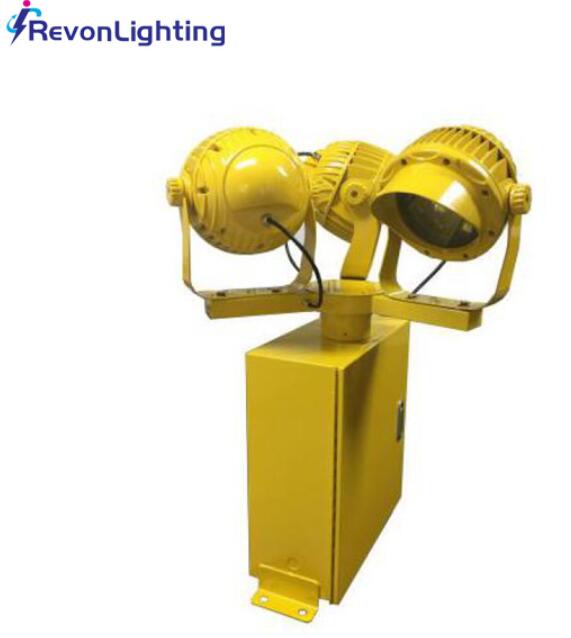In aviation, where precision and safety are non-negotiable, the heliport rotating beacon serves as a vital element in ensuring successful helicopter operations. This specialized light system is designed to enhance visibility, especially during nighttime or adverse weather conditions, making it indispensable for heliport infrastructure. Whether for commercial, medical, or emergency operations, the heliport rotating beacon stands as a symbol of reliability and safety.
Understanding the Heliport Rotating Beacon
A heliport rotating beacon is a high-intensity light fixture that emits flashing or rotating light signals, serving as a visual guide for pilots. Typically mounted at a prominent location on or near the heliport, this beacon is visible from significant distances, allowing pilots to identify landing zones easily. The rotating mechanism ensures the light is seen from multiple angles, providing 360-degree visibility.
Key Features of Heliport Rotating Beacon
The design and functionality of heliport rotating beacons make them uniquely suited to aviation needs. Key features include:
High Intensity: These beacons emit bright light signals that can penetrate through fog, rain, or darkness, ensuring visibility in all conditions.
Distinctive Colors: The light colors are often white and green, as per aviation regulations, making them easily recognizable for pilots.

Weather-Resistant Construction: Built with durable materials, these beacons withstand extreme weather, including high winds, precipitation, and salt exposure in coastal areas.
Energy Efficiency: Many modern rotating beacons utilize LED technology, offering energy savings and reducing maintenance frequency.
Rotational Consistency: Advanced motor systems ensure smooth and reliable rotation, maintaining consistent visibility for approaching aircraft.
| Heliport Rotating Beacon | Heliport Rotating Beacons |
Applications of Heliport Rotating Beacon
Heliport rotating beacons are critical in a variety of aviation scenarios, including:
Commercial Heliports: Facilitating smooth landings and takeoffs for corporate or commuter helicopters, particularly in urban settings.
Hospital and Emergency Heliports: These beacons guide medical helicopters to their destinations quickly, often under life-saving circumstances.
Offshore Platforms: On oil rigs and other marine structures, rotating beacons help pilots locate safe landing zones amid challenging sea and weather conditions.
Military Installations: These lights are integral to secure operations, guiding helicopters during training or deployment.
Advantages of Heliport Rotating Beacon
The adoption of heliport rotating beacons offers multiple benefits:
Enhanced Safety: By improving visibility and guiding pilots effectively, these beacons reduce the risk of accidents.
Cost-Effective Operation: LED-based models ensure long operational life and minimal energy consumption, leading to lower operational costs.
Ease of Installation: Most beacons are designed for straightforward installation and integration with existing heliport infrastructure.
Compliance with Regulations: Adherence to standards set by aviation authorities ensures seamless integration into global airspace systems.
The Technology Behind Heliport Rotating Beacon
Modern heliport rotating beacons are a blend of robust engineering and cutting-edge technology. Advanced optics ensure the light beam is focused and far-reaching, while the rotational mechanism is driven by efficient motors for uninterrupted operation. LED technology, now widely adopted, offers not only superior brightness but also reduced power consumption and heat generation. Additionally, some models incorporate solar panels, making them self-sufficient and ideal for remote or off-grid locations.
Environmental and Economic Considerations
The transition to LED-based heliport rotating beacons has brought significant environmental and economic benefits. With lower energy consumption, these beacons reduce carbon emissions and operational costs. Their long lifespan also minimizes waste and the frequency of replacements, aligning with sustainability goals. For operators, this translates to reduced maintenance and greater reliability, making these beacons a cost-effective investment.
Regulatory Compliance
Compliance with standards set by the International Civil Aviation Organization (ICAO) and the Federal Aviation Administration (FAA) is a key consideration for heliport rotating beacons. These guidelines dictate aspects such as light intensity, color, and operational range, ensuring that beacons provide consistent and reliable signals to pilots worldwide. Adhering to these regulations not only enhances safety but also facilitates international aviation operations.
Future Innovations
As aviation technology evolves, heliport rotating beacons are likely to incorporate even more advanced features. Smart systems with remote monitoring capabilities will enable operators to track the performance of beacons in real-time, addressing issues proactively. Integration with heliport management systems and automated controls could further streamline operations, enhancing both efficiency and safety.
The heliport rotating beacon is an essential tool for modern aviation, providing critical guidance to pilots and enhancing safety in all operational conditions. Its combination of advanced technology, durability, and compliance with global standards makes it a cornerstone of heliport infrastructure. As the aviation industry continues to innovate, the heliport rotating beacon will undoubtedly remain a key player in guiding helicopters safely to their destinations, ensuring reliable and efficient operations for years to come.